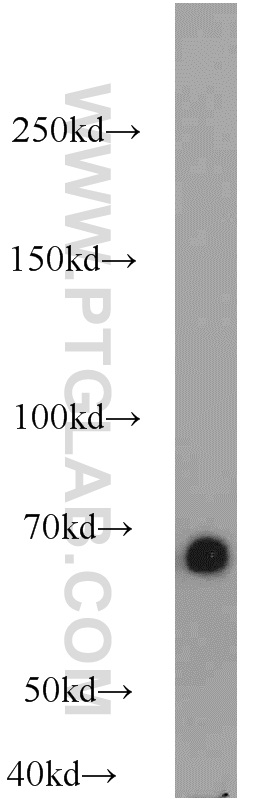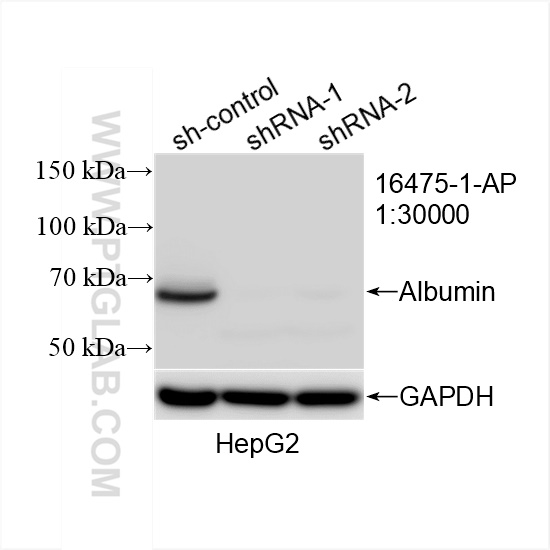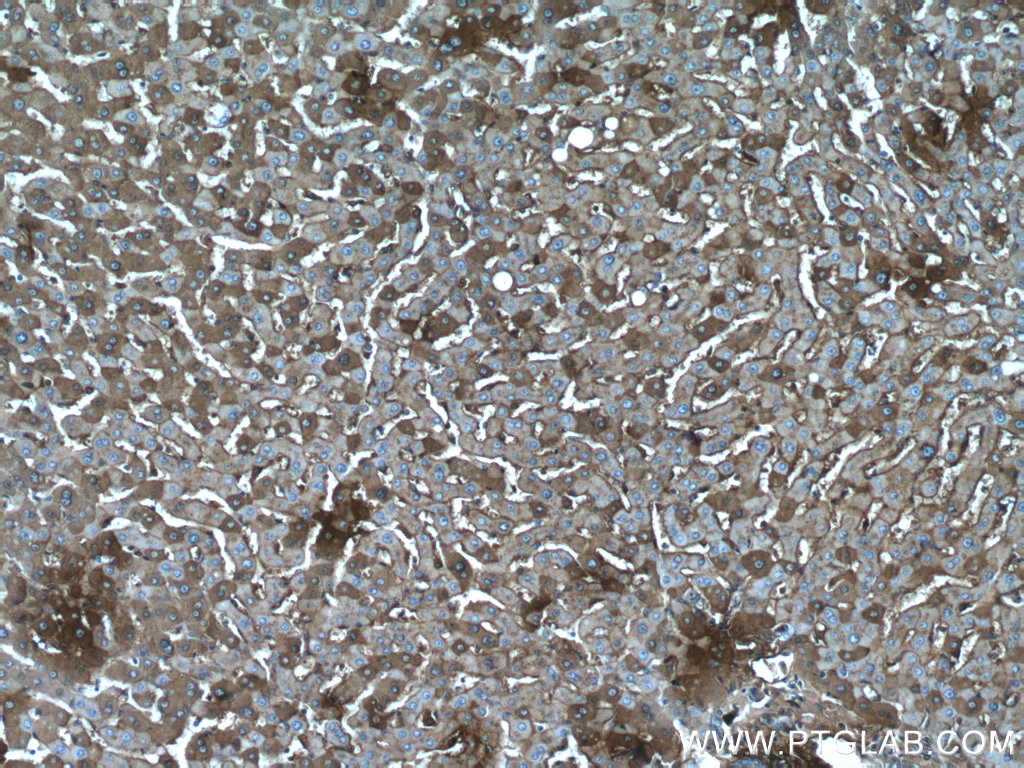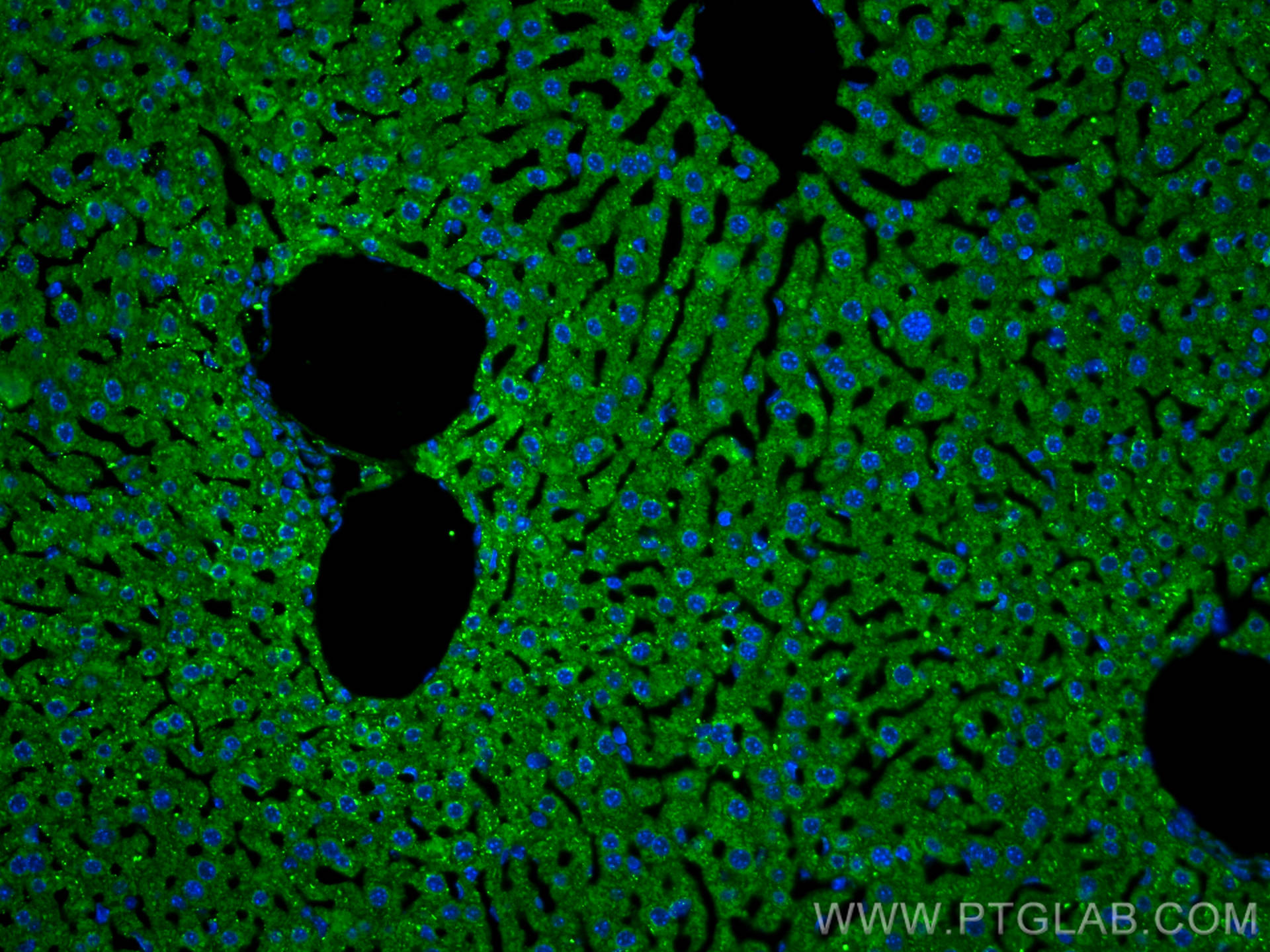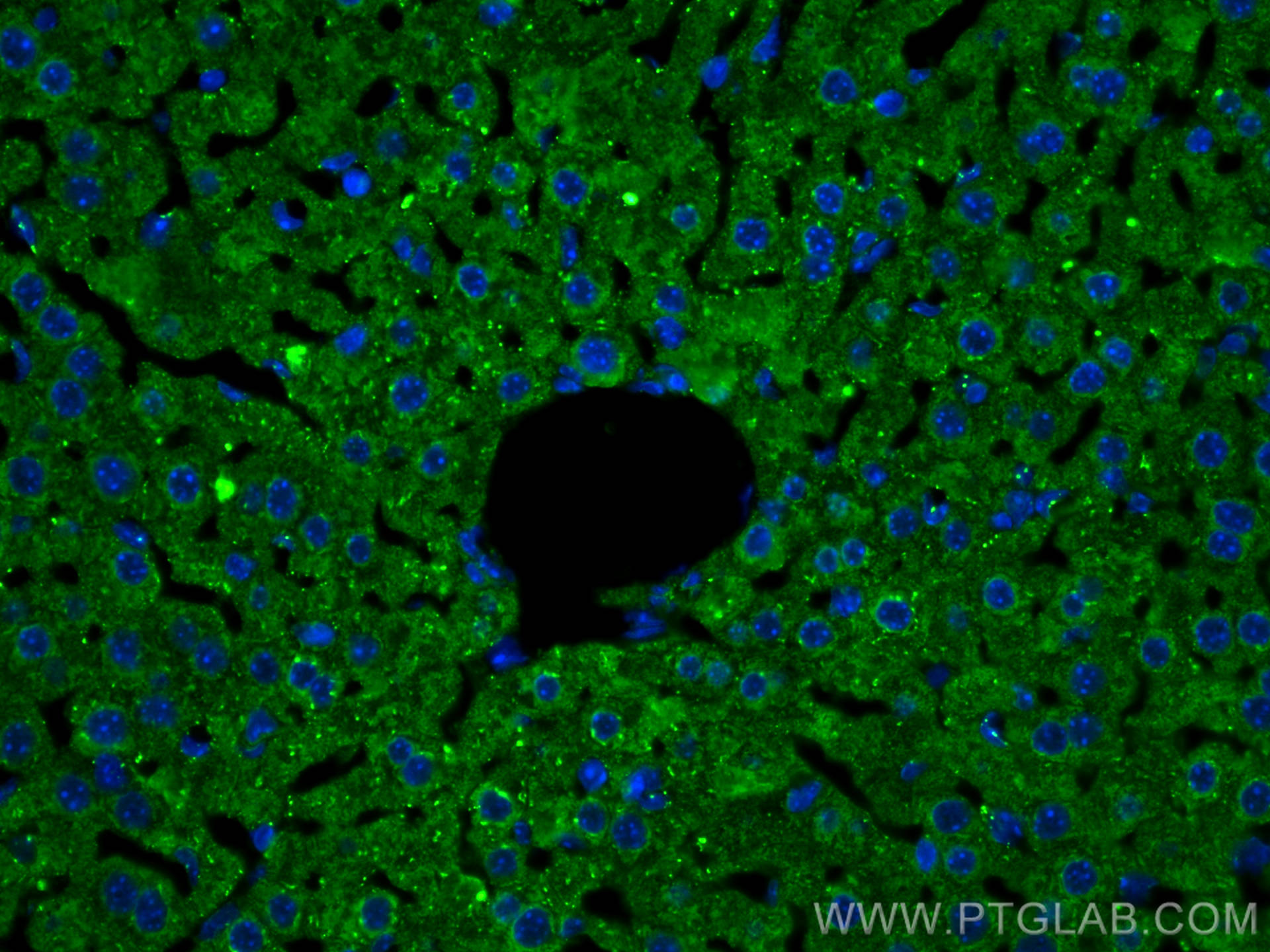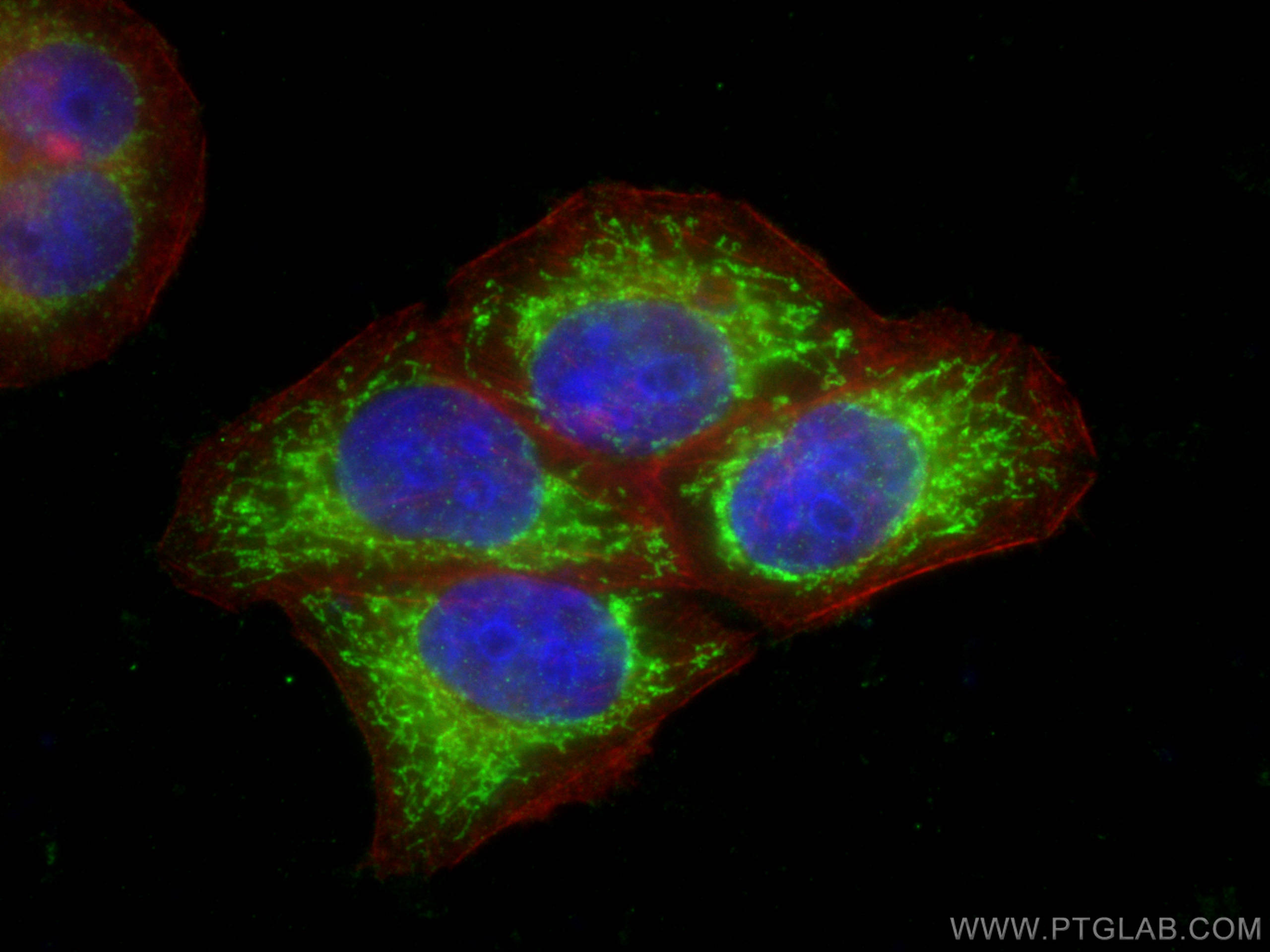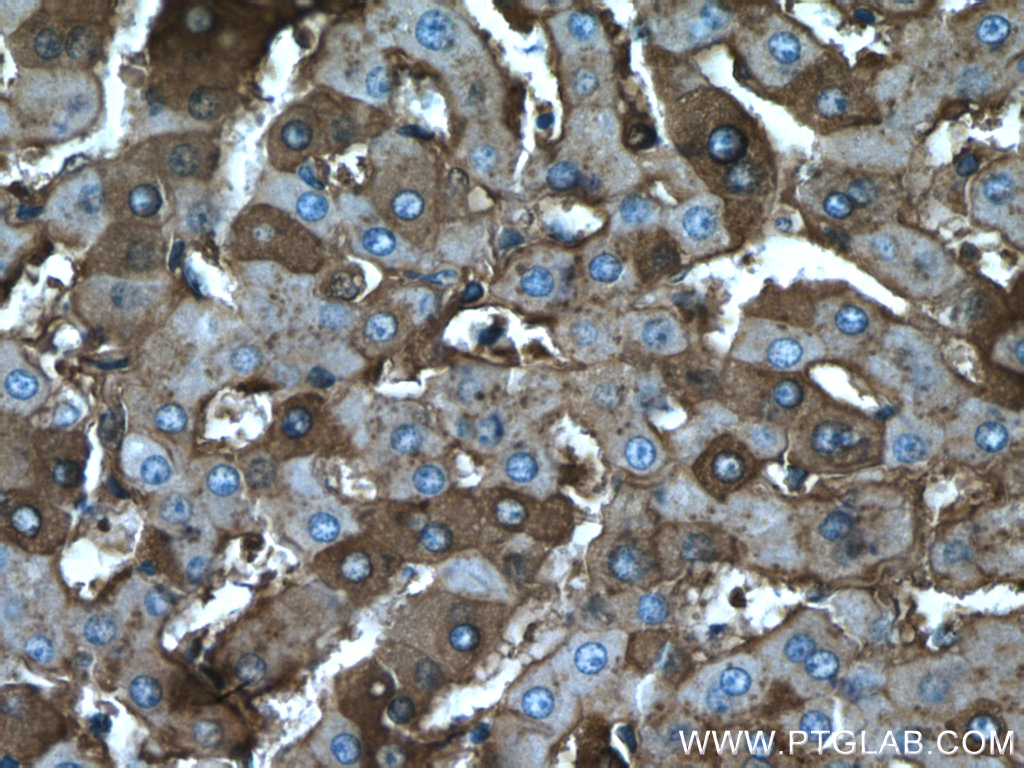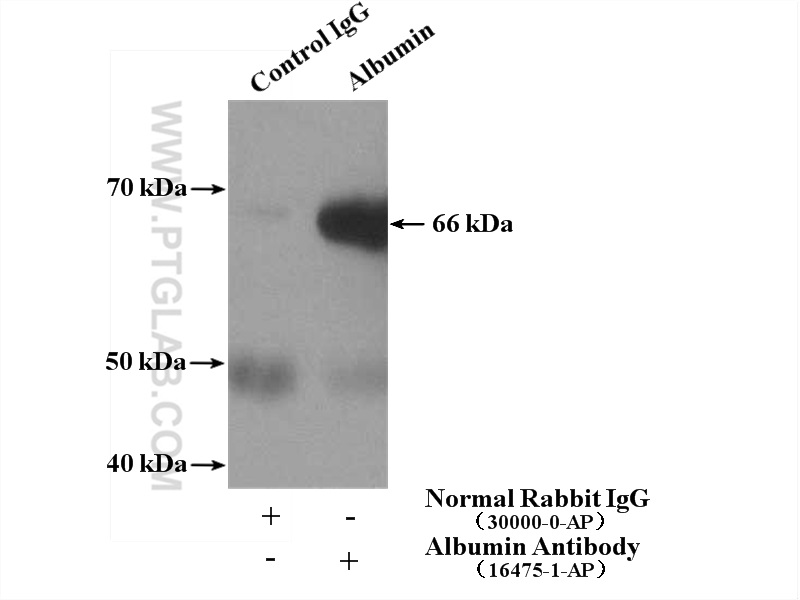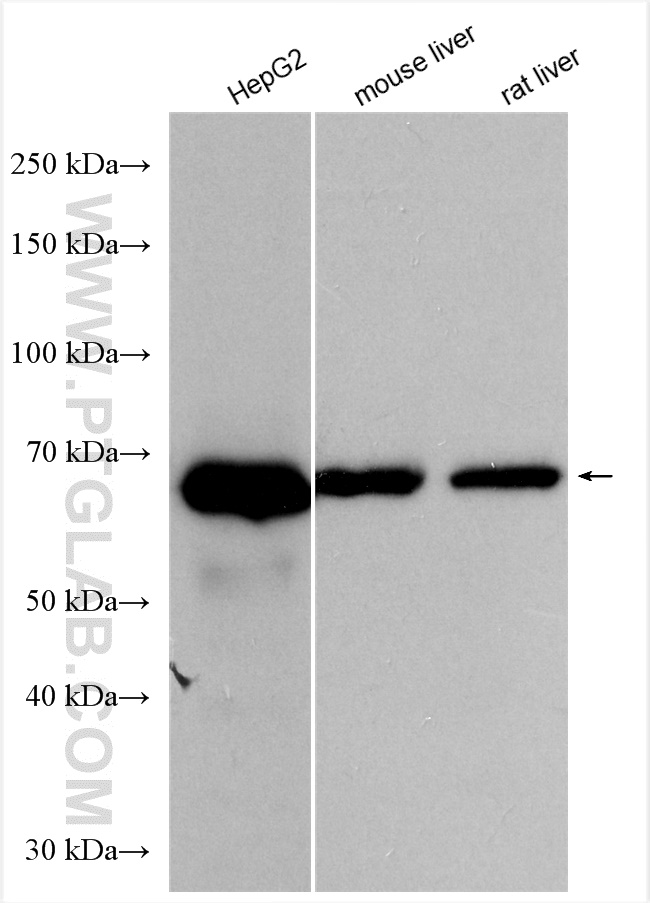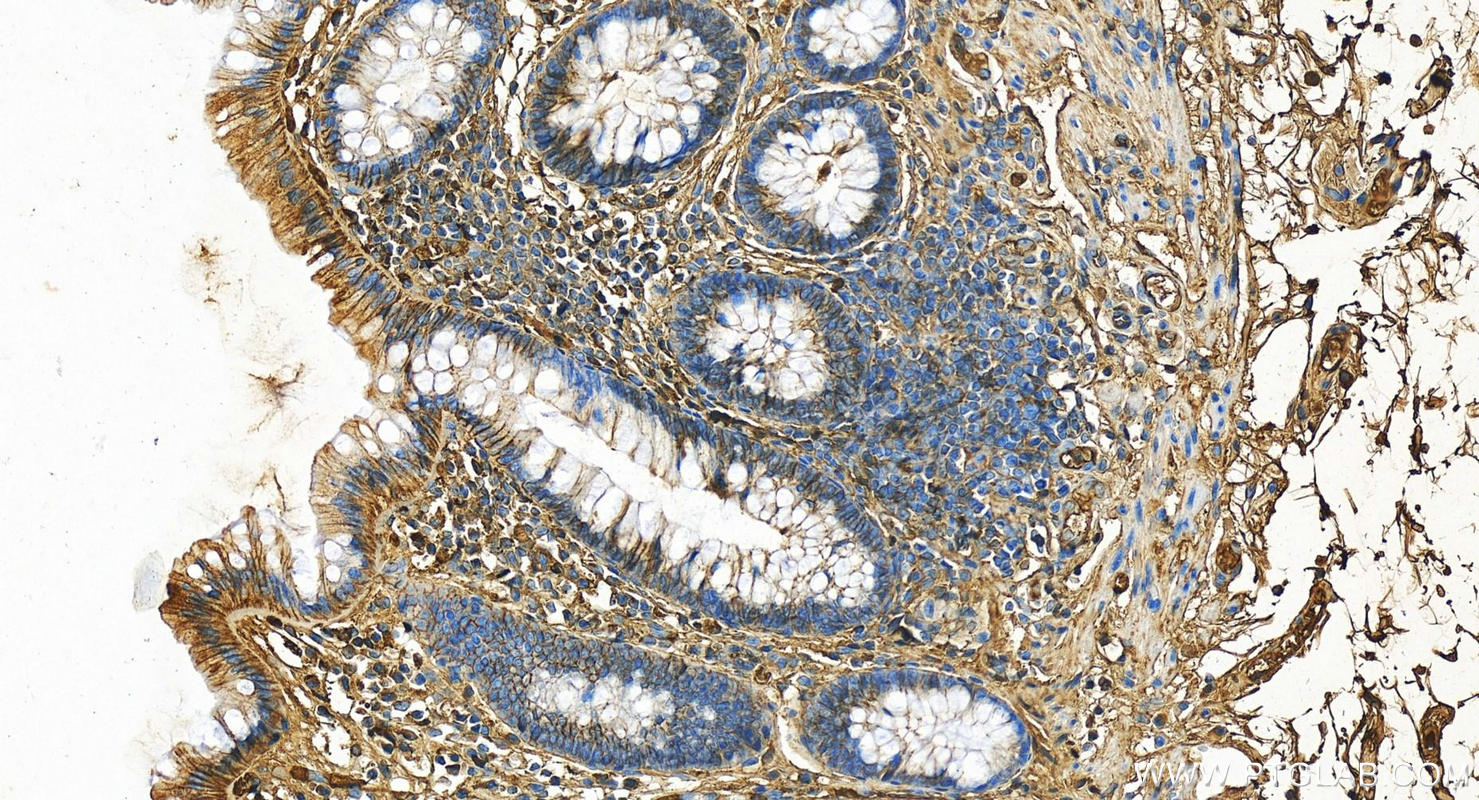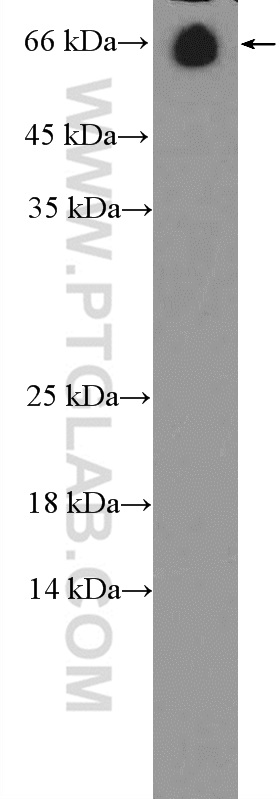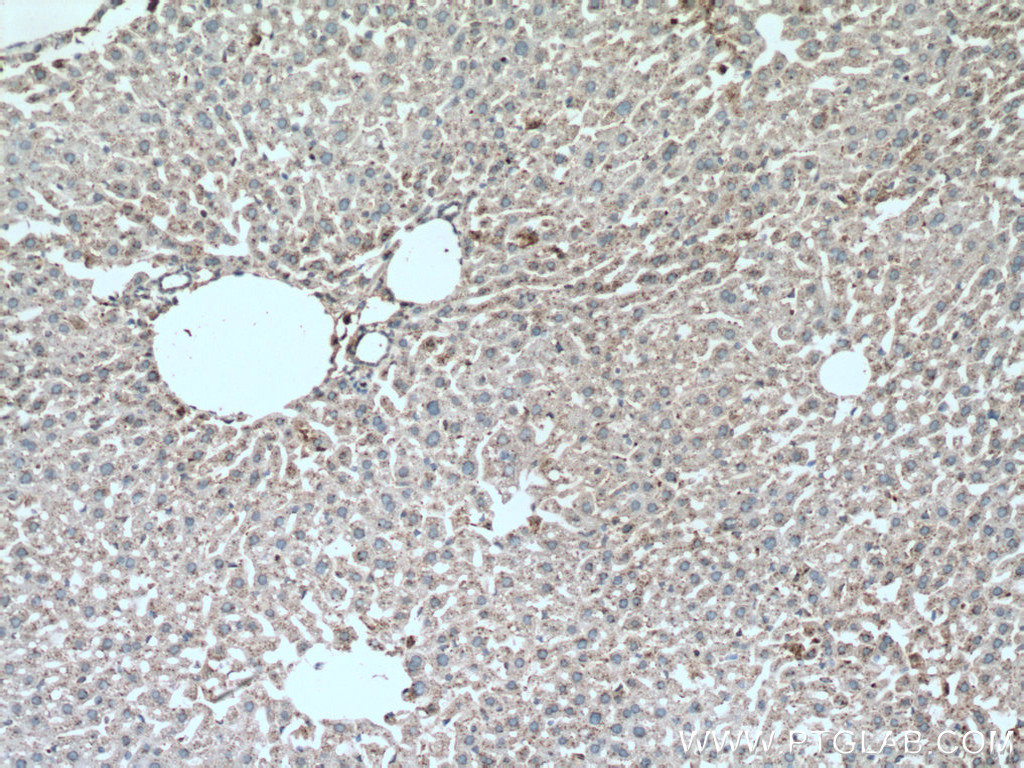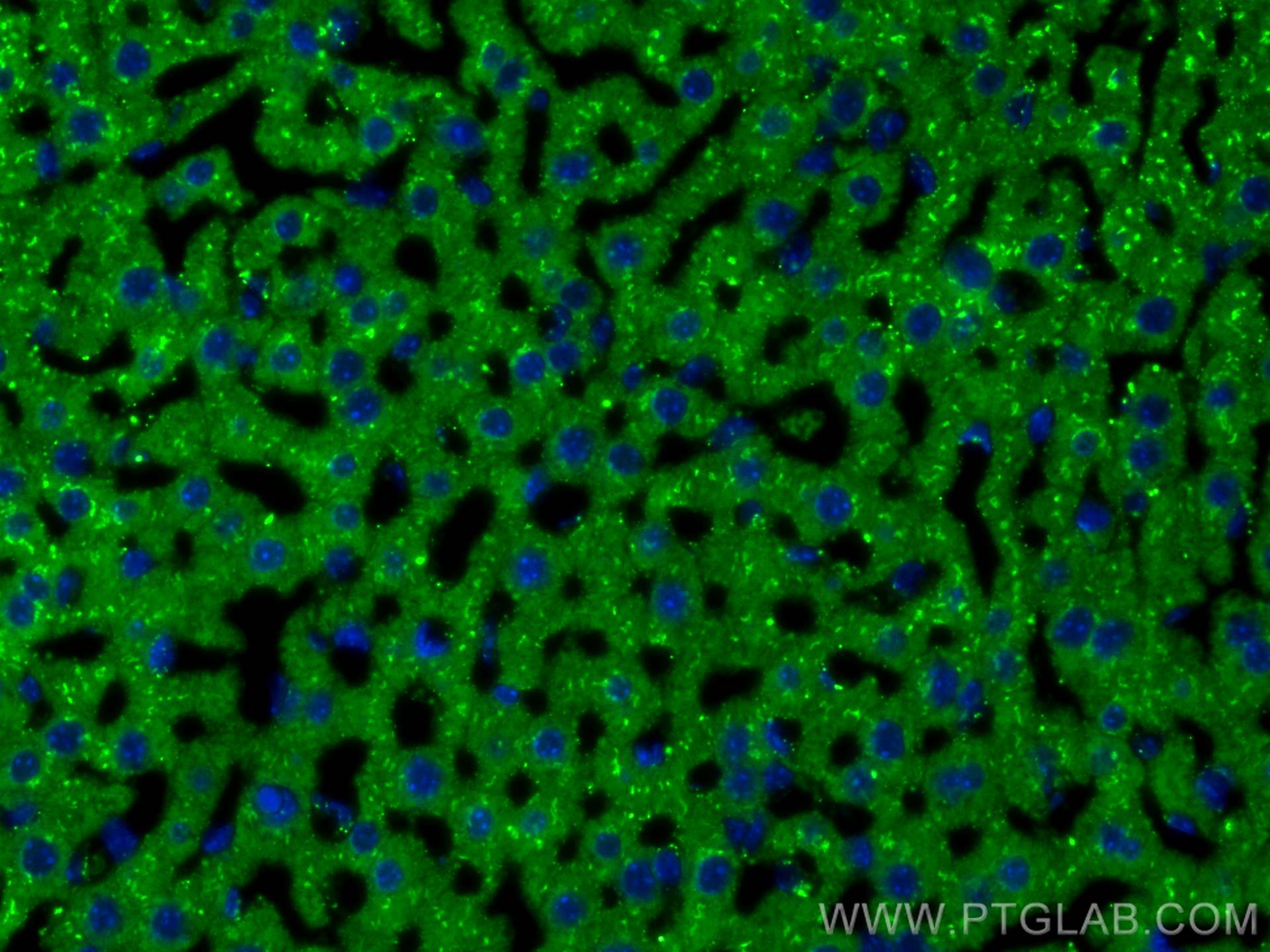验证数据展示
经过测试的应用
| Positive WB detected in | human blood tissue, human plasma, mouse serum, HepG2 cells, mouse liver tissue, rat liver tissue |
| Positive IP detected in | human plasma tissue |
| Positive IHC detected in | human liver tissue, mouse liver tissue, human normal colon Note: suggested antigen retrieval with TE buffer pH 9.0; (*) Alternatively, antigen retrieval may be performed with citrate buffer pH 6.0 |
| Positive IF-P detected in | mouse liver tissue |
| Positive IF/ICC detected in | L02 cells |
推荐稀释比
| 应用 | 推荐稀释比 |
|---|---|
| Western Blot (WB) | WB : 1:5000-1:50000 |
| Immunoprecipitation (IP) | IP : 0.5-4.0 ug for 1.0-3.0 mg of total protein lysate |
| Immunohistochemistry (IHC) | IHC : 1:200-1:2000 |
| Immunofluorescence (IF)-P | IF-P : 1:50-1:500 |
| Immunofluorescence (IF)/ICC | IF/ICC : 1:200-1:800 |
| It is recommended that this reagent should be titrated in each testing system to obtain optimal results. | |
| Sample-dependent, Check data in validation data gallery. | |
产品信息
16475-1-AP targets Albumin in WB, IHC, IF/ICC, IF-P, IP, CoIP, ELISA applications and shows reactivity with human, mouse, rat samples.
| 经测试应用 | WB, IHC, IF/ICC, IF-P, IP, ELISA Application Description |
| 文献引用应用 | WB, IHC, IF, CoIP, ELISA |
| 经测试反应性 | human, mouse, rat |
| 文献引用反应性 | human, mouse, rat, goat |
| 免疫原 |
CatNo: Ag9569 Product name: Recombinant human Albumin protein Source: e coli.-derived, PGEX-4T Tag: GST Domain: 256-609 aa of BC034023 Sequence: SKLVTDLTKVHTECCHGDLLECADDRADLAKYICENQDSISSKLKECCEKPLLEKSHCIAEVENDEMPADLPSLAADFVESKDVCKNYAEAKDVFLGMFLYEYARRHPDYSVVLLLRLAKTYETTLEKCCAAADPHECYAKVFDEFKPLVEEPQNLIKQNCELFEQLGEYKFQNALLVRYTKKVPQVSTPTLVEVSRNLGKVGSKCCKHPEAKRMPCAEDYLSVVLNQLCVLHEKTPVSDRVTKCCTESLVNRRPCFSALEVDETYVPKEFNAETFTFHADICTLSEKERQIKKQTALVELVKHKPKATKEQLKAVMDDFAAFVEKCCKADDKETCFAEEGKKLVAASQAALGL 种属同源性预测 |
| 宿主/亚型 | Rabbit / IgG |
| 抗体类别 | Polyclonal |
| 产品类型 | Antibody |
| 全称 | albumin |
| 别名 | ALB, Serum albumin, HSA |
| 计算分子量 | 609 aa, 69 kDa |
| 观测分子量 | 66 kDa |
| GenBank蛋白编号 | BC034023 |
| 基因名称 | Albumin |
| Gene ID (NCBI) | 213 |
| RRID | AB_2242567 |
| 偶联类型 | Unconjugated |
| 形式 | Liquid |
| 纯化方式 | Antigen affinity purification |
| UNIPROT ID | P02768 |
| 储存缓冲液 | PBS with 0.02% sodium azide and 50% glycerol, pH 7.3. |
| 储存条件 | Store at -20°C. Stable for one year after shipment. Aliquoting is unnecessary for -20oC storage. |
背景介绍
Albumin is the most abundant protein in blood plasma. Alterations of level of serum albumin are linked to variety of diseases. Albumin is expressed exclusively by well-differentiated hepatocytes, thus anti-albumin has been used to mark hepatocytes. In additon, glycated serum albumin is also a potential diabetes biomarker. The N-terminal 24aa of albumin will be cleaved to generate the mature form of serum albumin with MW 66 kDa. (21388516, 23832071)
实验方案
| Product Specific Protocols | |
|---|---|
| IF protocol for Albumin antibody 16475-1-AP | Download protocol |
| IHC protocol for Albumin antibody 16475-1-AP | Download protocol |
| IP protocol for Albumin antibody 16475-1-AP | Download protocol |
| WB protocol for Albumin antibody 16475-1-AP | Download protocol |
| Standard Protocols | |
|---|---|
| Click here to view our Standard Protocols |
发表文章
| Species | Application | Title |
|---|---|---|
Science Enterically derived high-density lipoprotein restrains liver injury through the portal vein. | ||
Signal Transduct Target Ther MDIG-mediated H3K9me3 demethylation upregulates Myc by activating OTX2 and facilitates liver regeneration | ||
Signal Transduct Target Ther The AKAP12-PKA axis regulates lipid homeostasis during alcohol-associated liver disease | ||
Nat Immunol Exosomes mediate the cell-to-cell transmission of IFN-α-induced antiviral activity. | ||
Immunity The zinc finger protein Miz1 suppresses liver tumorigenesis by restricting hepatocyte-driven macrophage activation and inflammation. | ||
Nat Cell Biol Manganese regulation of COPII condensation controls circulating lipid homeostasis |

